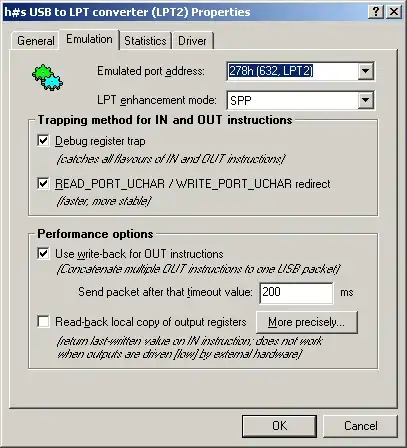I am trying to get a USB-to-Parallel IEEE-1284 cable which is showed as USB Printing Support in Device manager to work as a LPT port and tried the answer here. Using this command:
NET USE LPT1: \\[Computer-Name]\Printer /PERSISTENT:YES
The command execute successfully but I can't see the LPT1 in Hardware Devices to get the address to write to it. I know the port I create exits because I made a Java application that lists Serial and Parallel ports using RXTX lib, here is the output:

I added all that LPT ports with the NET command because my PC doesn't have any. But I don't see them anywhere to get the address and RXTX lib doesn't allow me to get port address AFAIK. Any ideas how to access ports?
EDIT:
Ok, to clarify things a little, I have a USB-to-Parallel IEEE-1284, when you connect it to a Windows XP machine it is showed as an USB Printing Support device so It doesn't appear as a LPT port because it is designed to work with printers.
I created a Printer with Generic/Text driver and connected it to USB001 port because it is the port of the USB cable. Then I share the printer and create a LPT port using NET command. Now I want to write data to that LPT port as I would do with any other native LPT port using for example InpOut32.dll.
If it is not possible to access the port on that way, how can I get access to the port to write/read raw data to it? Not to print a document but to write/read raw data to it as you would do with any parallel port.


